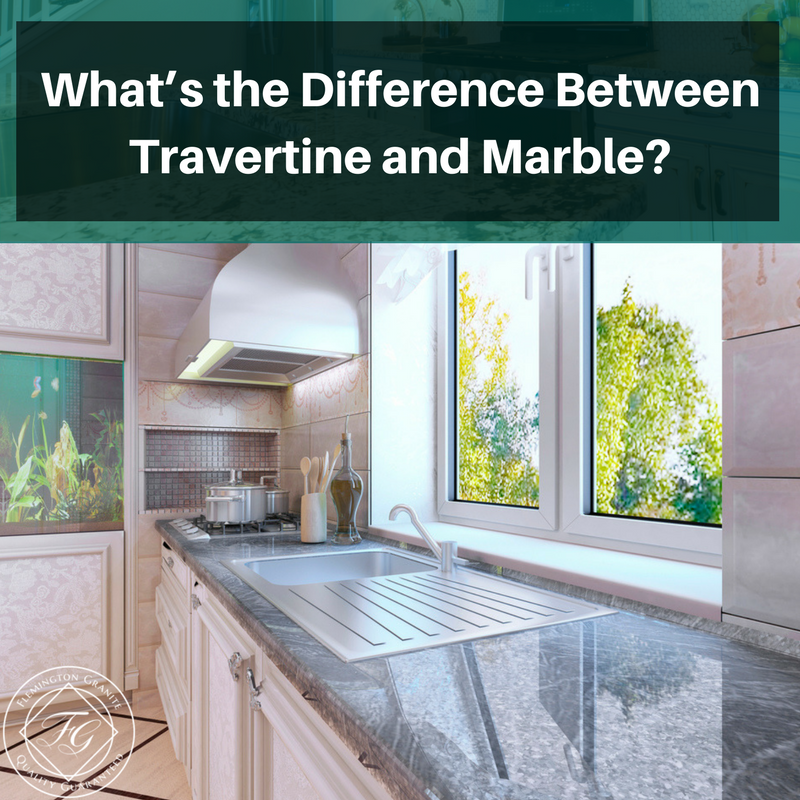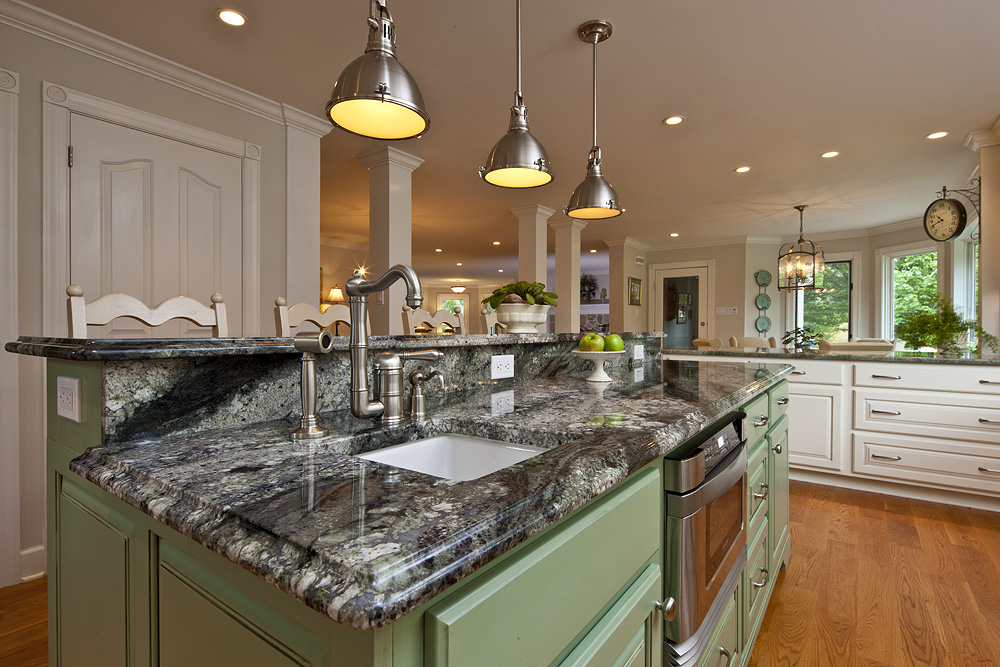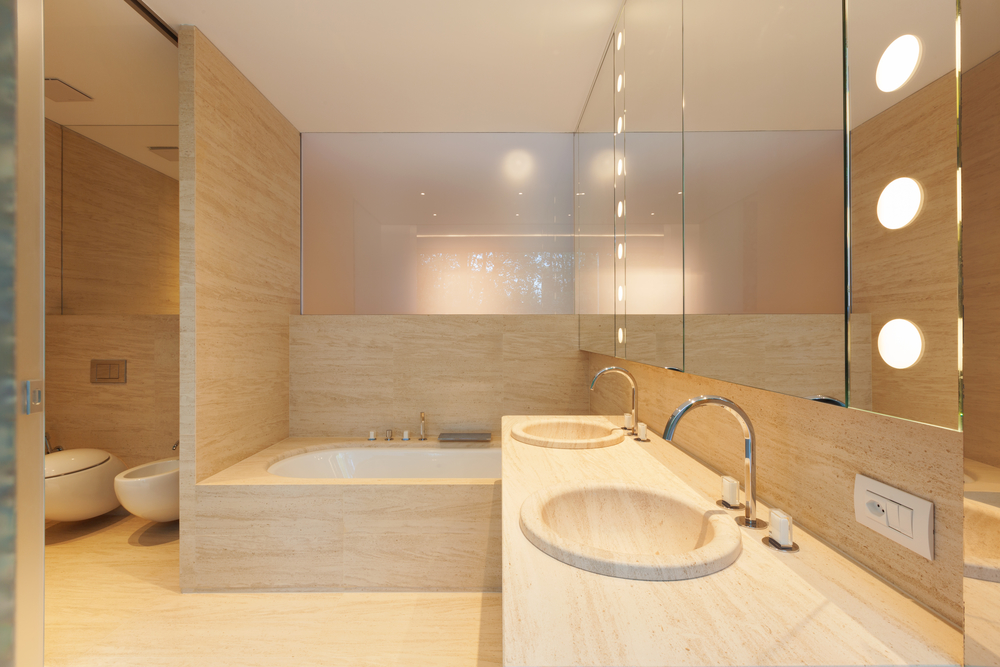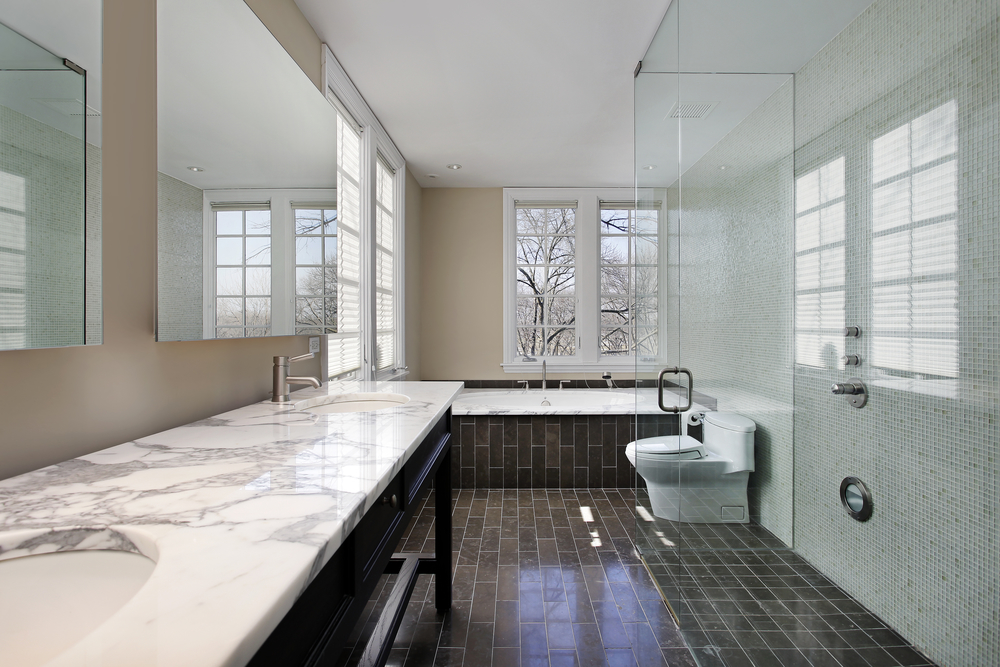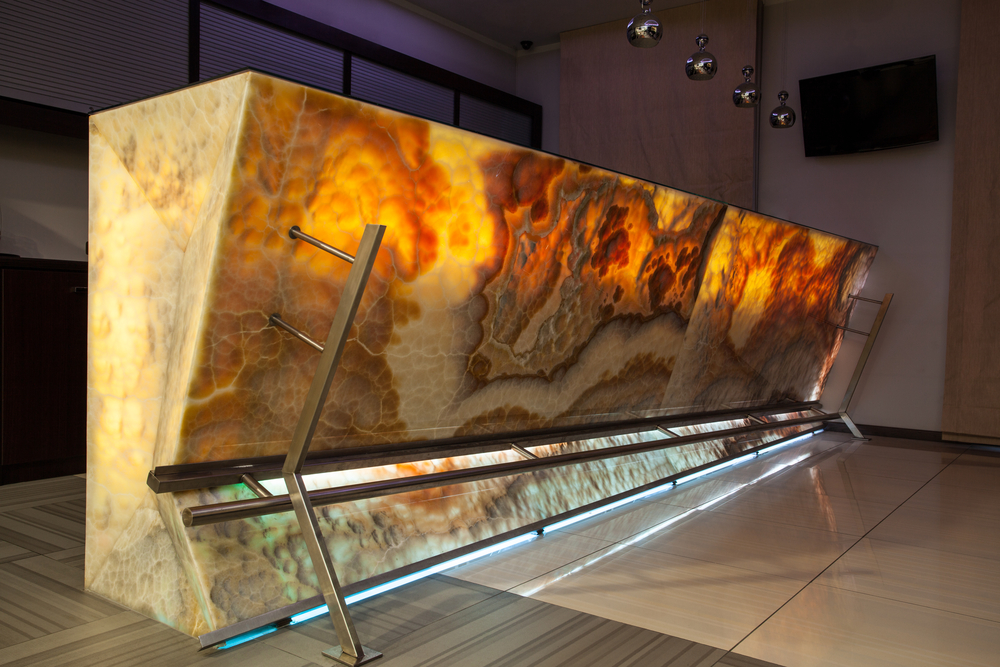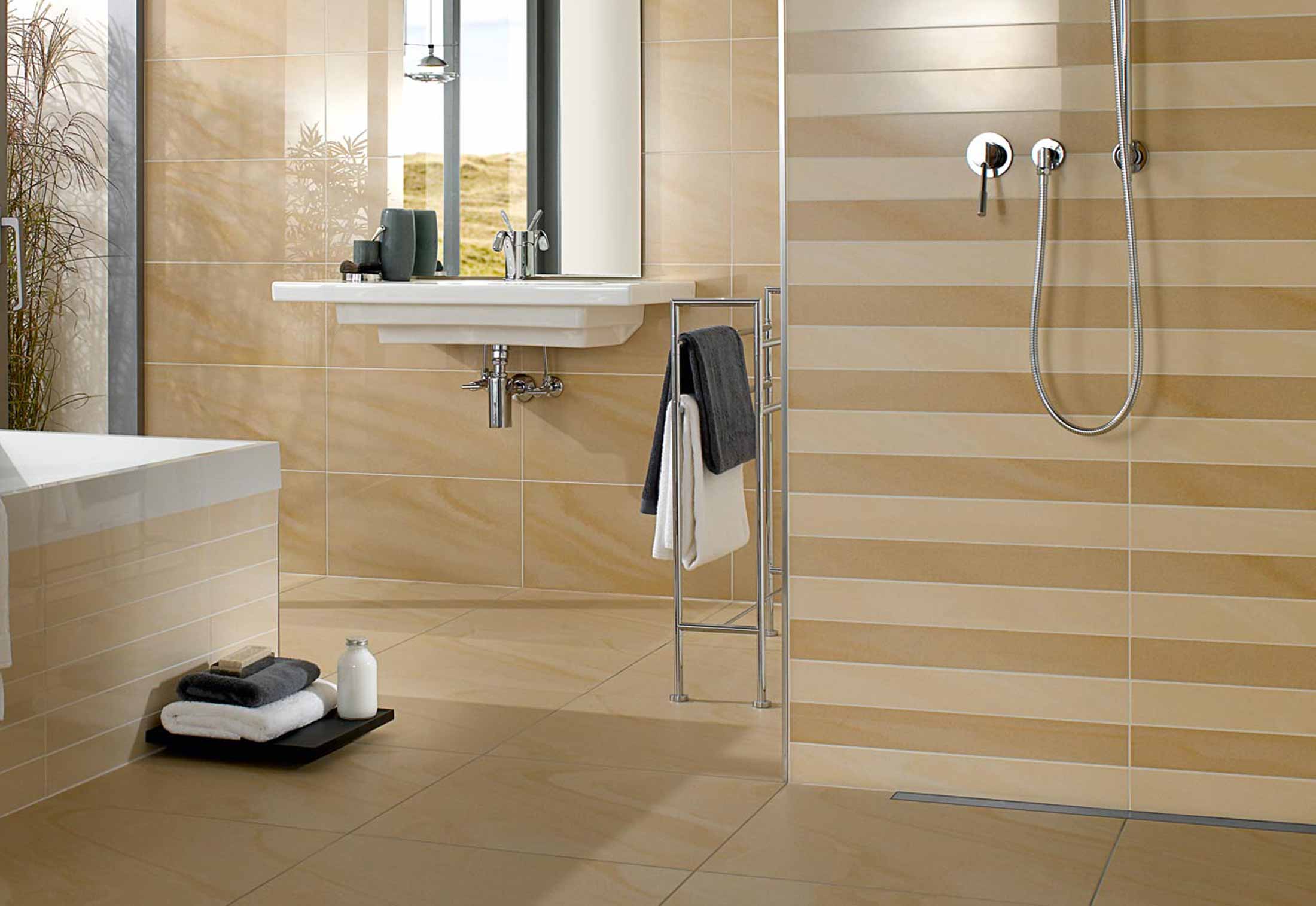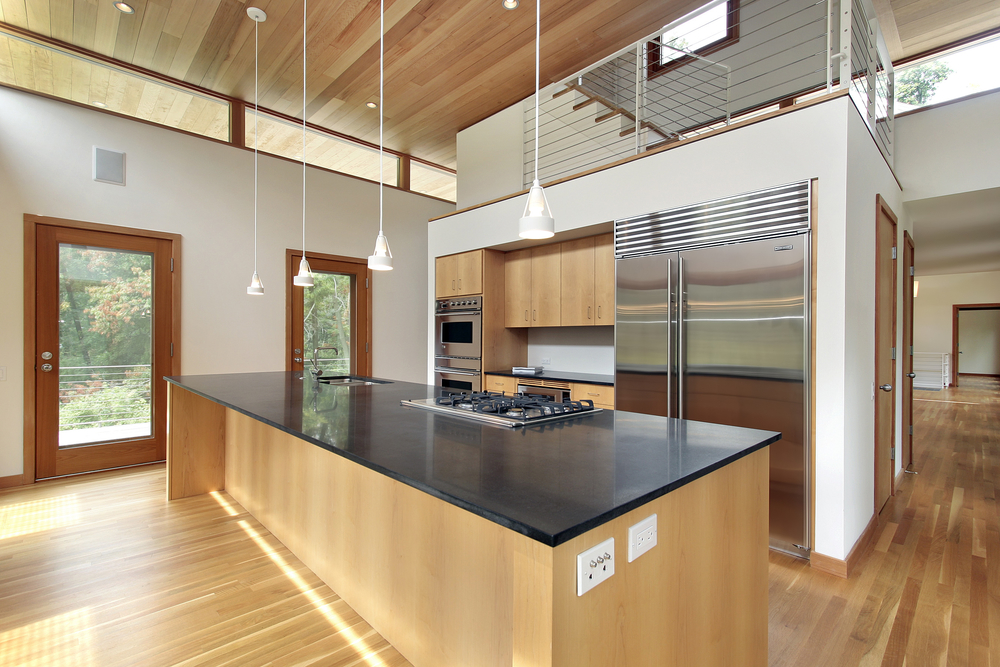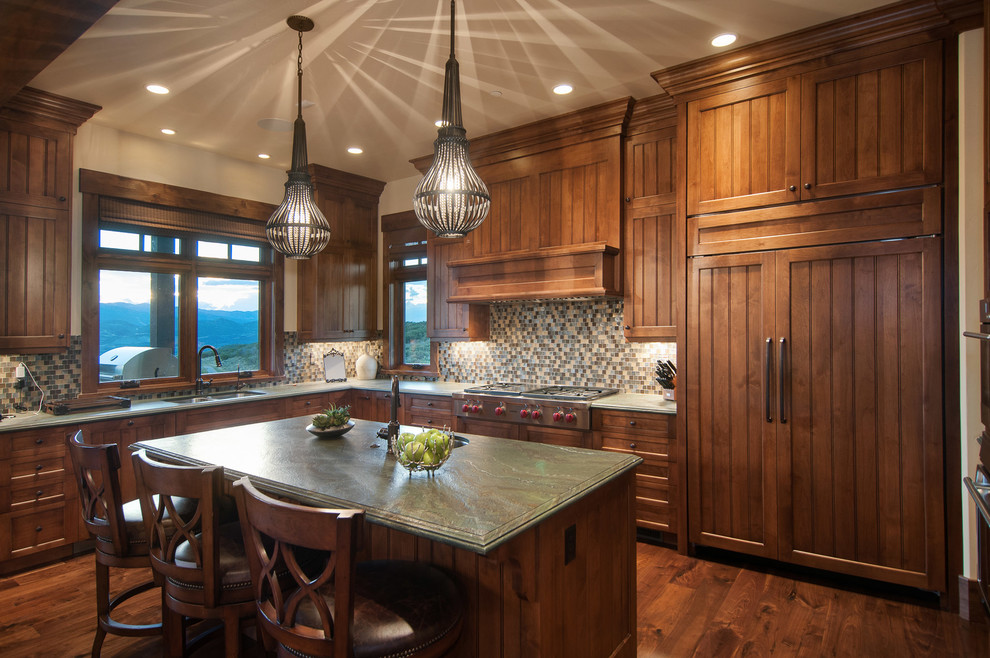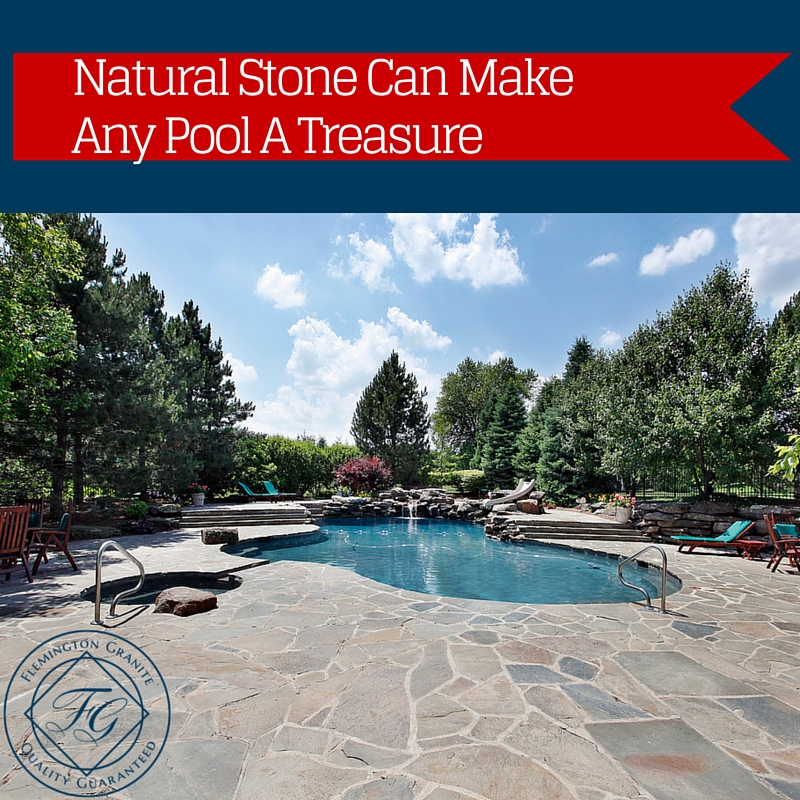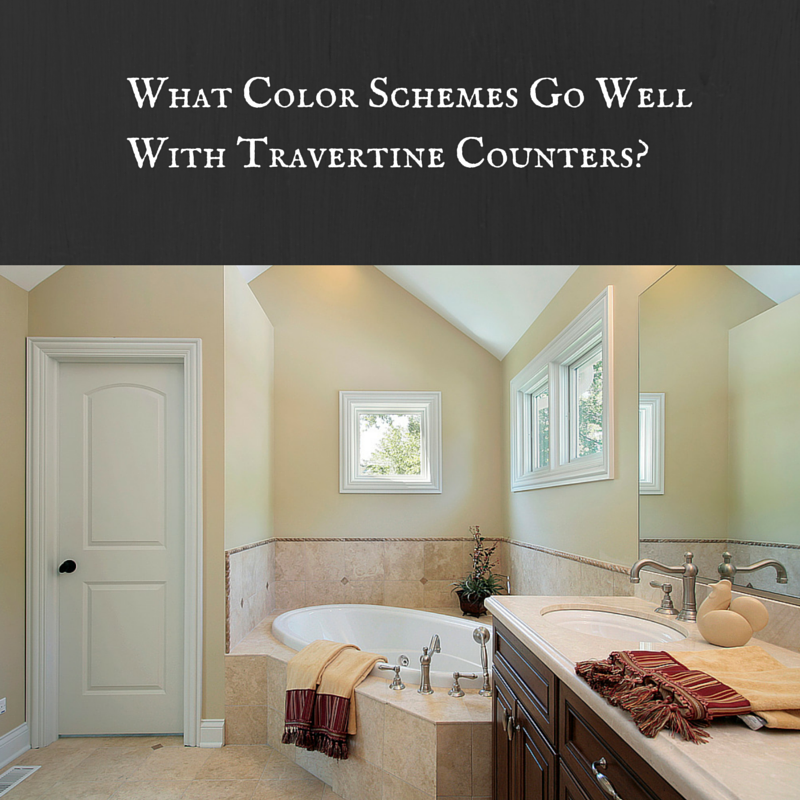Choosing new countertops, flooring, walls and backsplashes for a new home or remodeling project can be exciting. Stones like marble have been used for centuries, giving rooms a luxurious rich look but another stone that is growing in popularity, travertine, can provide a look that is just as sophisticated. Although both are types of limestone, each has its own advantages and disadvantages that you need to be aware of before choosing one or the other.
Differences in Looks
Marble has very distinct veining, even when it appears to be one solid color. A close look at the stone will reveal streaks of other colors, such as white, gray or black. Some marbles may include streaks of pink, blue or green. Marble is smooth with either a satin honed finish or a glossy polished finish. Marble may also have a glittering appearance.
Travertine has a more natural, textured look and may appear more porous than marble. It can be sanded to a smooth surface that is perfect for flooring or shower walls. Because travertine is more porous than marble, it requires additional sealant to protect the service. Travertine colors range from white to golden browns. Travertine tiles often have a varied pattern so they don’t have a completely uniform look. They are available in polished, honed, brushed, saw cut or tumbled finishes.
Best Uses for Each Type of Stone
Most often, marble is used in a bathroom because it provides a crisp, clean look. Marble is found in bathroom flooring, walls and counters although it does need to be sealed periodically to prevent damage to the surface.
Travertine is often found in tiles and used for bathroom or kitchen flooring. However, it is possible to use travertine on counters, in outdoor spaces as well as for backsplashes and walls. Because travertine can have a honed appearance, they are best used in areas where slipping can occur, such as around pools or hot tubs. They should be sanded, however, as the tiles can be rough. Travertine also needs sealing in order to protect the surface.
Cost of Travertine vs. Marble
Natural travertine is normally more expensive than cultured marble although natural marble is slightly more expensive than natural travertine. Costs vary widely depending on the quality of the stone and can range from $2 to $50 per square foot. Both types of stone are heavy and can be difficult to lift so it is recommended they be installed by a professional which can increase the price.
If you are considering natural stone for your remodeling project or new home, contact us today by completing the simple form online or giving us a call. We can help guide you through the process and help you choose the perfect stone for your needs.

